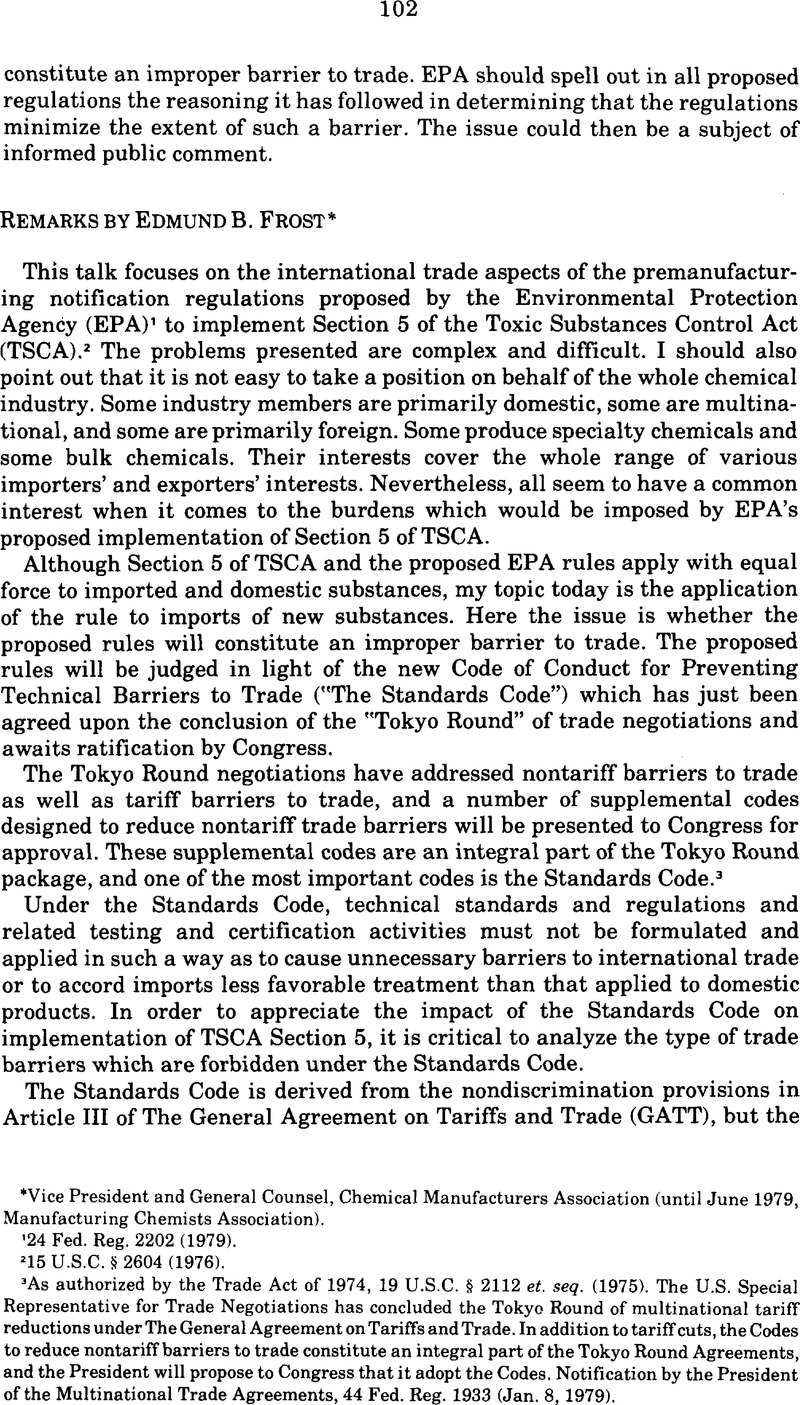No CrossRef data available.
Article contents
Remarks by Edmund B. Frost
Published online by Cambridge University Press: 28 February 2017
Abstract

- Type
- International Regulation of Toxic Substances
- Information
- Copyright
- Copyright © American Society of International Law 1979
References
1 24 Fed. Reg. 2202 (1979).
2 15 U.S.C. § 2604 (1976).
3 As authorized by the Trade Act of 1974, 19 U.S.C. § 2112 et. seq. (1975). The U.S. Special Representative for Trade Negotiations has concluded the Tokyo Round of multinational tariff reductions under The General Agreement on Tariffs and Trade. In addition to tariff cuts, the Codes to reduce nontariff barriers to trade constitute an integral part of the Tokyo Round Agreements, and the President will propose to Congress that it adopt the Codes. Notification by the President of the Multinational Trade Agreements, 44 Fed. Reg. 1933 (Jan. 8, 1979).
4 This focus is echoed in Article XX of GATT, the “general exceptions” article, which provides: “nothing in this Agreement shall be construed to prevent the adoption or enforcement by any contracting party o f measures necessary to protect human or animal or plant life or health.” But measures adopted under the “general exceptions” article may not be “applied in a manner which would constitute a means of arbitrary or unjustifiable discrimination between countries where the same conditions prevail or a disguised restriction on international trade.”
5 See Statement o f the European Council o f Chemical Manufacturers Federations presented at EPA hearings on the § 5 Rulemaking (New York, N.Y., Mar. 9, 1976).
6 Comments of the Manufacturing Chemists Association on EPA Proposed Regulations for Premanufacture Notification under § 5 of TSCA, at 188-205 (Mar. 26, 1979).
7 Id. at 207-222, 23&-250.
8 For instance, to the extent additional information is properly required in a § 5(e) or 5(f) proceeding, the unnecessary obstacle argument would not be available. The distinction is that there would be a determination that the information was necessary in accordance with the procedures and standards mandated by Congress.
9 Under § 5, a company can begin manufacture 90 days after filing its premanufacture notification. EPA can, in some cases, extend the 90-day period to 180 days. Since § 5 is a notification, not a licensing provision, EPA does not have discretion to block manufacture after a valid notice unless it turns to a special adjudication under § 5(e) or 5(f). Nevertheless, in the proposed § 5 rule EPA has asserted that it has a wide discretion to reject and declare a premanufacture notification “invalid” without following the procedures of § 5(e) and 5(f).
10 Comments o f the Manufacturing Chemists Association, supra, at 162-188.


